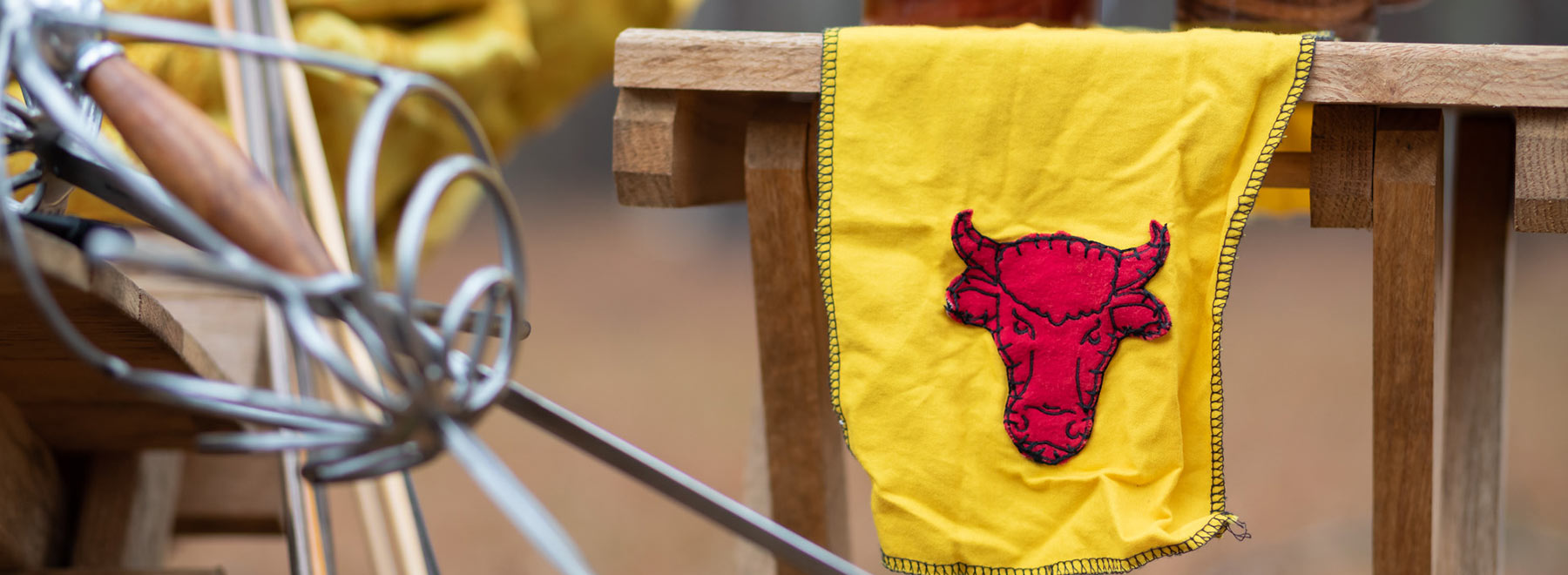People of the U: Alana Bowman, Dr. Jason Griggs
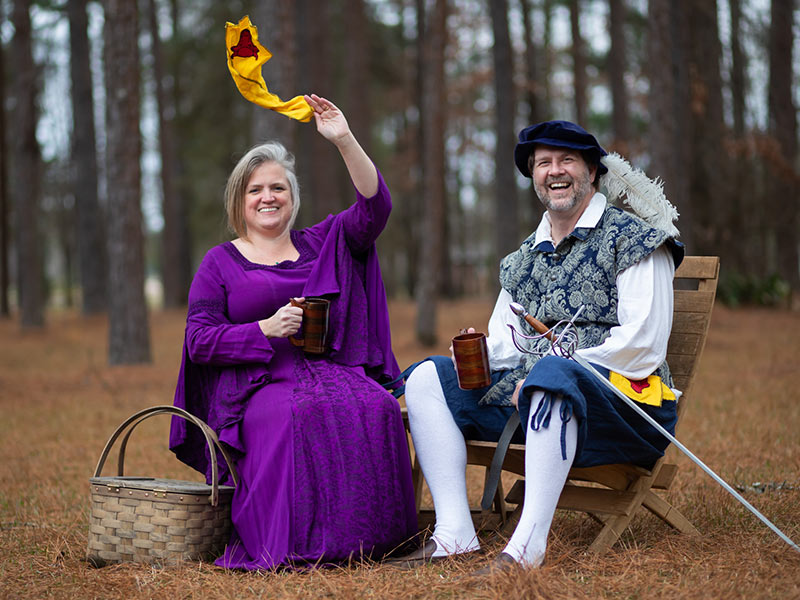
Alana Bowman and Jason Griggs have their “mundane” lives as employees of the University of Mississippi Medical Center’s School of Population Health and School of Dentistry. But on evenings and weekends, their clocks turn back – way, way back.
While a student at the University of Florida, Griggs heard about a group called the Society for Creative Anachronism through a friend. He attended a meeting, and there met another member who taught him to make chain mail armor, or the silver interlocking armor used in medieval times, and later to make beer and wine the same way it was done before the 1700s.
Griggs was hooked – and fascinated by learning to do things that used to be a part of daily life centuries ago.
“As long as I can remember I was interested in doing the types of things, the arts and crafts and sciences, that people used to do a long time ago and in different cultures,” Griggs said. “ … A lot of these activities are things that people never stopped doing, but our society got more specialized. So now only a few people know how to do these things, like making beer in a brewery or factory.”
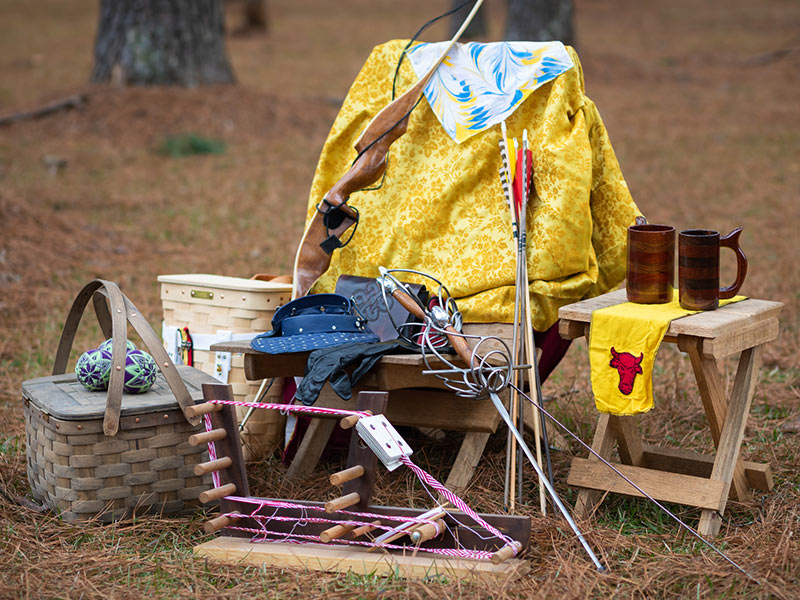
For example, he said, there was a time when “every household needed to know how to keep bees and use their wax to make their own candles.”
Or to make mead, an alcoholic beverage created by fermenting honey with water, and sometimes other fruits, spices, grains or hops – which Griggs and Bowman also do at their home in Brandon.
The Society for Creative Anachronism, or SCA for short, is an international organization “devoted to the research and re-creation of pre-17th century skills, arts, combat, culture, and employing knowledge of history to enrich the lives of participants through events, demonstrations, and other educational presentations and activities,” according to the group’s mission statement.
Griggs joined the organization and began learning everything from ebru, a 16th century style of Turkish painting, which he teaches locally, to rapier fighting, which he practices on Sundays at a park in Pearl. Rapier fighting was a natural draw for him as a former member of his college’s fencing team.
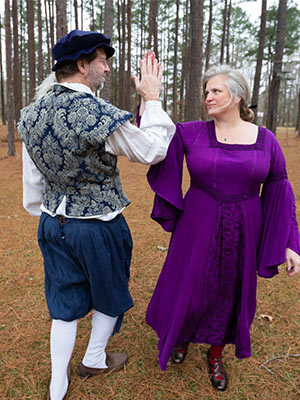
Bowman was introduced to SCA by Griggs when they began dating in 2014. Despite some initial hesitancy, she learned over the years she enjoyed many aspects of the SCA and its events as well, such as embroidering and making clothes in fashions popular before the 17th century.
“(The SCA) is pretty much (learning about) anything that would’ve been a part of a medieval life when you couldn’t go to the store and buy stuff,” Bowman explained. “ … You are required to have research to back up your methods in what you’re doing. You can’t just say ‘Here, I did a medieval embroidery,’ you have to have a bibliography and sources …
“It’s a real education-based hobby,” she said.
She has also spent days making cheese from scratch, an involved and time-consuming process that culminated in a 24-hour brine bath, painting with red wax and then aging at 50 degrees for six to eight weeks.
And while many UMMC employees and students will flock to a beach for spring break, Griggs and Bowman will head instead to Lumberton. There they will join thousands of other SCA members who gather each year to recreate scenes, activities and life from the Middle Ages at an event called Gulf Wars.
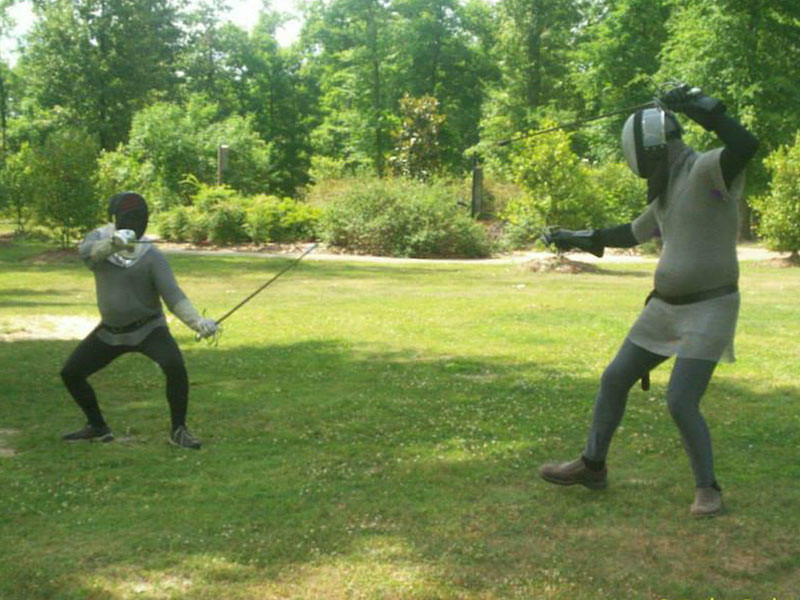
At Gulf Wars, members from the region come together at Kings Arrow Ranch for classes in everything from cooking, glass, jewelry making to textiles, scroll painting and dancing. The days are filled with classes and activities such as staged fights and battles. The nights are for dinners, balls, celebrations and camping out.
There are also equestrian and falconry activities in addition to medieval-style fighting, including with rapiers, or narrow swords, heavy weapons and archery.
Staying in character during the week is important. Those who aren’t dressed in period-appropriate clothes often get asked why they’re “naked.” Members’ real jobs and daily lives are referred to as “mundane.”
While many SCA members who attend Gulf Wars have personas – or period-appropriate names and identities – Griggs and Bowman don’t get too involved in that part.
“Some people really enjoy the role playing,” Bowman explained, and many of those people become part of the area’s “royalty,” or their local group’s hierarchy. “I find I don’t enjoy the pageantry and role playing myself.”
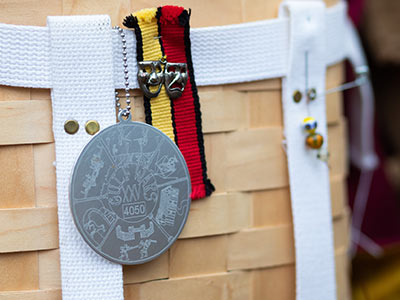
And Bowman and Griggs’ clothes (which must also resemble those from the Middle Ages) are more often dictated by the unpredictable weather than by any particular role.
“The first year I was there it was hot as Hades, and you have to wear period clothing. So I was really quickly making myself a Roman outfit, a peplos, sewed it up the side and wore it so I could have open arms and everything,” Bowman laughed.
Griggs took a different approach.
“I started out with Venetian-style clothes and then quickly learned on really hot days it’s best to dress in feudal Japanese style clothing, samurai style,” he said.



